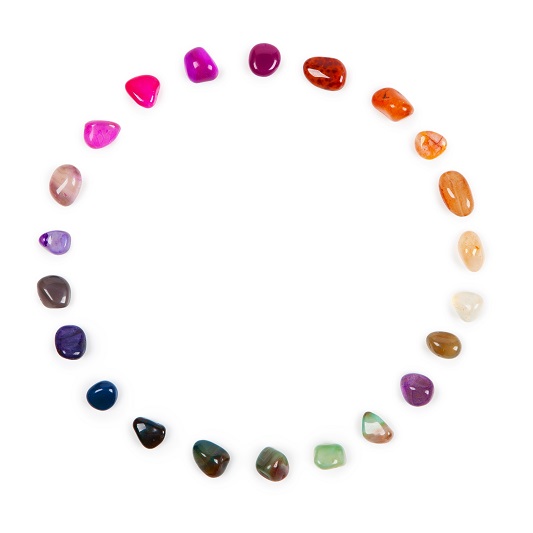Your Complete Guide to Silver

Precious Objects in Fairy Tales and Fables
15th September 2017
Gemstone of the Week: Emerald
22nd September 2017Introduction to Silver
Silver is a unique chemical element, holding the atomic number 47. Boasting the highest electrical activity out of all the metals, silver also has the highest thermal conductivity and reflectivity, too. When sourced from deep within the earth’s crust, the white transition metal appears in its free elemental form, commonly referred to as ‘native silver’. For thousands of years, silver has been sought after as one of the precious metals. Though it is much more common than it’s gold alloy, in its native state, the metal is hard to come across. As a strong contender in the seven metals of antiquity, silver boasts an important and valuable role in most societies today.
Although silver is renowned for its use in currency and delicate jewellery, the popular metal is also commonly used for solar panels, water filtration, ornaments and tableware. In addition to being used in these everyday items, the metal boasts high value industrially through its use in electrical conductors, window coatings and even in the catalyst of chemical reactions. Compounds of the product are also found in the photographic film, as well as being widely used every day in the medical word in X-rays. In this article, we will explore the precious metal in more detail, looking into its origins, history and it’s common uses in a modern day.
Origins and History of Silver
Deriving from Turkey, silver was first mined in Anatolia around 3,000 BCE. It is commonly believed that without the introduction of silver, early civilizations in Ancient Greece would have been unable to flourish to what they are today.
Years later in 1,2000 BCE, it is documented that the sourcing and developing of silver moved to the Laurium mines, found in Greece. It is thought that the precious metal provided currency for the areas growing empires, allowing them to progress rapidly in society. Changing location once more, by 100 CE, silver mining in its majority had moved to Spain, with the ancient mines becoming a supplier for the Roman Empire. While silver was first discovered years previously, no other event comes close to the discovery of the precious metal by European conquerors; silver mining from this point onward would never be the same again. The quantity of mining and production of the white metal increased dramatically from this point onwards, with the majority of the mining taking place in Bolivia, Peru and Mexico. Shortly after, mining spread to other countries of the world including America, where the Comstock Lode was discovered in Nevada. By the 1870s, silver production was at an all-time high, growing from 40 million ounces annually to a groundbreaking 80.
With new mines being discovered constantly, over the next few years silver production spread to Australia, Central American and Europe with new discoveries also being found in Canada, Africa, Chile and even Japan. This brought a 50% increase in the overall production by 1920, racking the total up to about 190 million ounces annually. The massive increase in the production of the precious metal probably has something to do with new mining techniques coming to light; with breakthroughs including steam-assisted drilling, mine dewatering and improved haulage. From this point on, further advances were taking place that enabled the ability to separate silver from other products, which in turn made it possible to work with much larger amounts of the substance.
Over 5,000 year after it was originally discovered, global silver production has now skyrocketed to an average of 886 million ounces annually.
What is Silver Used for?
While the metal is commonly used in high-end jewellery and international currency, silver also plays an important role in many important industries worldwide. Due to its highly reflective and conductive properties, the white metal is incredibly useful in a variety of electronic technology and appliances.
Today, the majority of silver produced is actually used in industry, rather than in delicate jewellery, which theoretically makes it an industrial metal more than a precious one. This is typically reflected in the market value of silver. While the price of gold stays relatively similar, silver dips and spikes constantly, depending on the demands of industry. For instance, as the metal is commonly used in water filtration, if the demand for water filters decreased, then it is likely that the value of silver would take a hit for a while. For investors, this can be looked at in a positive light; as when the value dips it means that there is plenty of opportunities to purchase more stock, knowing full well that the demand is likely to increase again.
To no surprise, one of the most important industries today that silver plays a part in is the electronics field. Due to its highly conductive nature, the metal is perfect to be used in a variety of electronic devices, which consequently leads the electronics industry to eat 42% of the industrial demand for silver. Though only appearing in tiny quantities, the precious metal is used today as contacts in switches, making it present in all kinds of products and devices. In addition to being used in circuits, silver is also apparent in batteries, CDs, DVDs and LEDs.
The conversion of solar energy into electricity is known as photovoltaics, which is playing an ever-increasing role in today’s society. With solar panels becoming more popular than ever, this area of the industry is another section requiring silver to function adequately. The metals ability to conduct electricity to well has to lead to it being used in industry to collect electrons from atoms to generate an electric current. In today’s society, we are looking to steer away from fossil fuels more than ever, so it is only assumed that solar energy is going to become increasingly popular. The demand for silver within this specific industry means that the need for the white metal is expected to increase dramatically over the next hundred years.
In Summary
Whether it’s used in delicate handmade jewellery, or used on an industrial level in the creation of solar panels, the precious metal is nothing less than an asset to our everyday lives.




